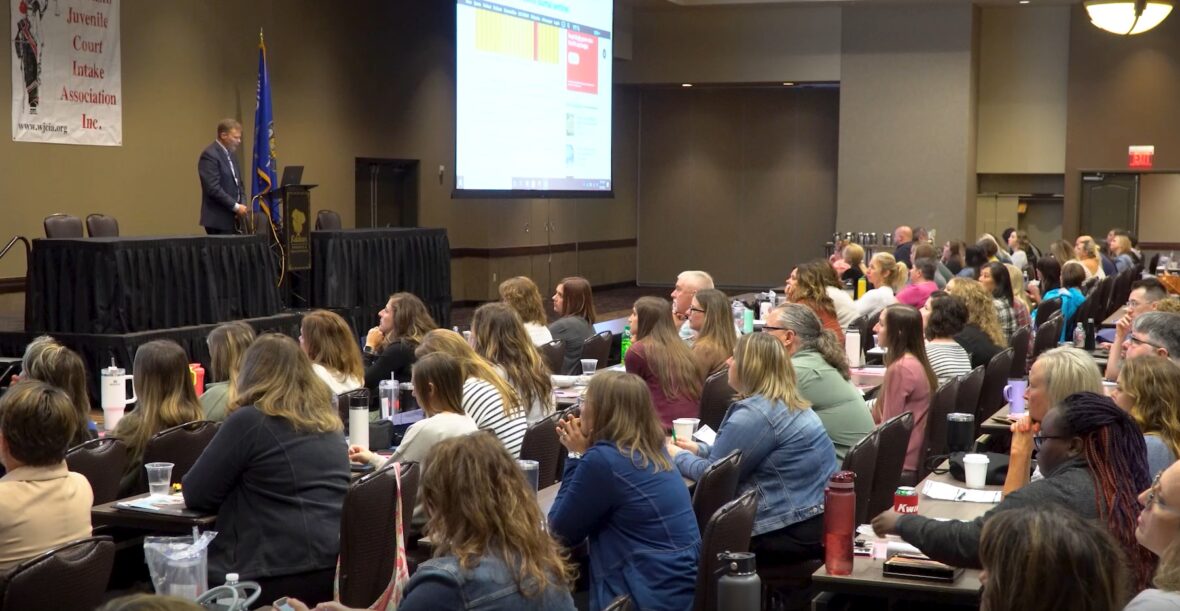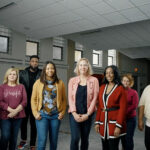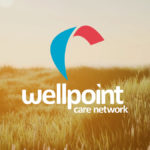Curriculum Updates a Key Component of Wellpoint Care Network’s Trauma Informed Care Approach

Wellpoint Care Network has been at the forefront of the Trauma Informed Care (TIC) movement for more than 15 years now. But that doesn’t mean that our content and approach has remained the same.
We knew from the beginning that the theories and concepts we were teaching would need constant updating based on real-life experience. That’s why we are always adapting to keep up with the changing world.
The latest iteration of that comes in January of 2025, as Wellpoint Care Network rolls out curriculum updates for all of our Trauma Informed Care trainings to all trainers who are actively certified.
“This is a special moment for a special time,” said Tim Grove, Senior Director of Trauma Informed Strategy and Practice at Wellpoint Care Network. “We’ve been through a pretty unprecedented three to four years. While we’ve done what we could to keep track of that and do some tweaking, now is really the time for significant revision. We all got knocked off our feet the last few years. In some ways, this curriculum revision is a bit of a declaration to say, it’s time to find our way back to our feet. It’s time to stop being on the defensive and reeling from all the stuff that’s happened to us, and start to find our energy, our commitment, our dedication again to getting back to a better place.’”
Below are just a few of the new activities you can expect from Wellpoint Care Network’s Trauma Informed Care trainings, whether you’re a first time participant or returning for recertification.
REGULATION
One of our Seven Essential Ingredients of Trauma Informed Care (7ei) is Regulation. What we’ve learned over time is that very few people fully understand what it means to be regulated — it’s possible that being relaxed is not the same thing as being regulated. It’s possible that someone looks like they’re settled down, but they’re not actually regulated.
So, one of the questions we started to ask ourselves is, ‘What exactly is regulation?’
“One of our curriculum revisions is going to be the addition of some regulation stations during training,” said Grove. “People will not just hear about or watch a video on regulation, but actually see and experience it. We’re going to have HeartMath units that will objectively measure whether or not it’s actually working. The challenge that some people have is that they lose their enthusiasm for regulation because they have tried an activity and it didn’t work for them right away. What if we could leverage the technology that’s out there and get people a little closer to knowing what actually seems to work for them or other people.”
CAREGIVER CAPACITY
Caregiver Capacity is another one of our Seven Essential Ingredients, and we’ve incorporated that into our trainings as well.
We like to say our curriculum is like a coin that you can flip on either side. One side of the coin is specific ways to think about these ideas and concepts and strategies for the people we serve. But, if you flip the coin over, you can say, ‘Those same concepts, ideas and strategies can help me serve them better and can enhance my individual or group capacity.’
That’s why we have developed and added new material on workforce issues.
“If you’re an administrator or a supervisor, and you’ve got a big meeting coming up, you want to be at your best from a stress resilience performance point of view,” said Grove. “We now have some ideas about that incorporated into the trainings. Or let’s say there’s been a significant uptick in employees struggling with their own mental health. We’ll also talk about the benefit of HR managers and supervisors being trauma-informed.”
PERSPECTIVE SHIFT
We have developed an activity that took our Perspective Shift and created a client-specific application.
“We then ask questions like, ‘How did they need to be seen in a trauma-informed way? What new information do you need to seek out? What new experiences do you need to seek out? What do you need to do differently about how you approach that person or the situation to create a different outcome?’” said Grove. “It can be really hard, but also very powerful. We want people to walkaway with concrete strategies, and this is one.”
SYNDEMIC TIMES
In most professions, it’s no longer true that you can focus on doing just one thing at a time.
Let’s take a classroom for example. Ten years ago, the challenge presented to educators may have been a few “disruptive” children in the room. Today, it is more common to have a few disruptive kids in the corner and five kids starting to escalate in the other corner of the room. And over the last few years, we’ve also learned that the bandwidth and tolerance that the rest of the class has to patiently wait those two situations out is diminished.
“The unprecedented nature of the last few years has taught us that we must walk and chew gum at the same time,” said Grove. “Through our trainings, we are designing activities and material to address everything going on at the same time. We’re pretty excited about leaning into the challenges that Syndemic Times bring and saying, ‘If those are the complicated situations our world currently creates, awesome. Let’s figure out how to problem solve.’”
Though we know that evolution and lifelong learning are key, we are also staying true to who we are. Many of the core principles that people have learned from or come to expect from Wellpoint Care Network will remain the same.
For instance, what we do has always been anchored in science. Our curriculum is built not just from the wisdom of lived experience — people who have graciously taught us about their pain and resilience and possibility — but also because we leveraged and learned from some of the most brilliant people in the world who have been thinking about this subject and topic and work for a long time.
We also know that one of our curriculum’s most powerful strengths is that diverse groups use our content — librarians, law enforcement, healthcare providers, bus drivers, school teachers, clinicians and more. That is something we are proud of and that we will continue to create information that is practical and applicable.
Lastly, we give people the opportunity to customize. We have core material, but over the years, we’ve heard more and more individuals say. ‘I want you to help me make this even more specific for my group or population.’ That is unique to our program and something we remain committed to.
Combining our updated curriculum with our core material, we welcome you to join us or come back for a look at what’s new. This information can truly make a difference for you and those you care about.








